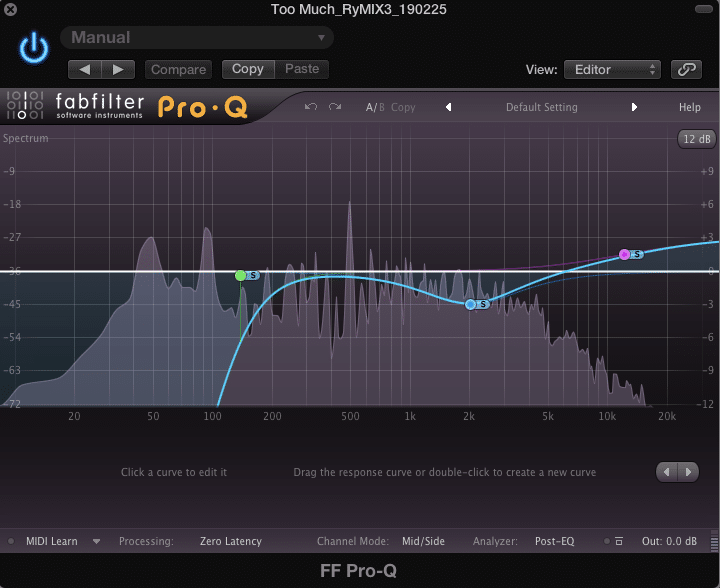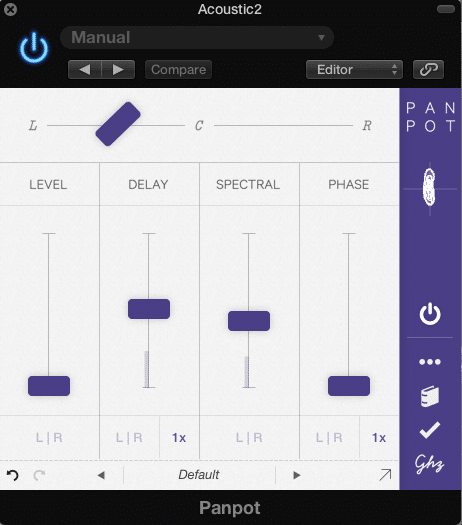Top 5 Affordable Stereo Imagers
Stereo recording was invented in the 1930’s. Nearly 90 years later, many of us still don’t know how to create a balanced stereo image. Although the problem may arise from inadequate mix techniques, another explanation is our dependence on one tool - level based panning.
Fortunately for the modern mixing engineer, new plugins sporting innovative and sonically expansive technologies are now available.
Here are five affordable stereo imagers, you should seriously consider adding to your repertoire.
Number 5: Ozone Imager

This plugin from Izotope is completely free and available to download from Izotope’s website. It involves a “vectorscope,” the stereoize function you see in other izotope plugins in the ozone line, and a width fader to adjust the width of the stereo image. So, if you’ve wanted to use ozone plugins before but couldn’t afford them, or maybe just wanted to sample this function, the Ozone Imager is a great introduction into the Ozone line of products.
Price: Completely Free (Other than the time is takes to create an Izotope account)
Company Link: izotope.com/en/products/master-and-deliver/ozone/ozone-imager
Pro Tip: This plugin can be used on both individual tracks and full mixes. Try automating the width function at key points for an innovative and captivating effect.
Number 4: Waves S1 Imager

I’m sure you all are familiar with Waves plugins. One you might have overlooked in the S1 Imager - a handy plugin primarily used for post production. The S1 is a go to for a lot of mastering engineers, as it allows you to quickly widen or narrow a mix’s perceived loudness, or adjust for an unbalanced signal using the asymmetry and rotation tools. This plugin is great for both correcting or enhancing a stereo, or even a mid-side image.
Price: $39
Company Link: waves.com/plugins/s1-stereo-imager
Pro Tip: Use the S1 Imager on a stereo bus, sending instrumentation you want to be wider to that bus. You can then vary the amount you send each instrument to that bus, giving yourself greater control over your stereo image.
Number 3: Waves Doubler

This next plugin is one of my personal favorites for a couple reasons. Not only does it allow you to add additional voicing to a track, it allows you to control their placement within a 90 degree stereo field. Each voice can have its stereo placement, gain, tuning, and even modulation individually controlled - creating a unique effect that works best on individual tracks.
Price: $29
Company Link: waves.com/plugins/doubler
Pro Tip: If used for stereo imaging, it’s best to use the detune and modulation functions sparingly. Although these sound great when blended in, relying too heavily on them will make this plugin perform like a chorus or tremolo effect. That’s great on occasion, but not always a go to sound if your main concern is your stereo image.
Number 2: FabFilter Pro Q

Now I know what you’re thinking, ‘why is an EQ number 2 on this list?’ Simply put, it’s that good of a plugin - so good in fact, that it’s use has gone beyond that of a traditional EQ, and into the realm of stereo imaging.
As soon as you change the channel mode to mid-side, you open up a world of possibilities for carefully crafting your stereo image.
Put the Pro Q on your output and cut the low end on the side channel to make you low end mono. Carve out room for your vocal by attenuating the side frequencies at 2kHz. Or maybe adjust the output by panning it to the side to create a wider stereo image.
Price: $107.40 (after a 40% price drop on sweetwater.com )
Company Link: fabfilter.com/products/pro-q-3-equalizer-plug-in
Pro Tip: When mixing, consider cutting the side channel up to 135Hz. This will make the bass frequencies mono, and clean up your mix before mastering. For more information on this process watch our video titled “1 Technique to Clean Up Your Stereo Image.”
Number 1: Goodhertz Panpot

In the number one spot is the Goodhertz Panpot, a tool that’s an absolute game changer when it comes to spacial design. Traditionally when it comes to panning, we have one option - and that’s level panning. I’m sure we’re all used the panpot knob in our DAW, dragging it left and right, and then thinking that we’ve done all we can do in terms of panning. The Panpot designed by Goodhertz changes all of that by introducing 3 new types of panning.
Delay, Spectral, and Phase.
Founded on the principles of psychoacoustics, these functions take advantage of how our brains perceive sound sources in the environment, by mimicking the conditions that cause these perceptions.
Price: $49
Company Website: goodhertz.co/panpot
Pro Tip: This plugin is best used on individual tracks, in lieu of traditionally level panning. If you need or want to use level panning, do so inside the app. That way you can see how it affects the spectrogram displayed within the plugin’s design.
Conclusion
Although this list is to a certain extent subjective, learning how to use these plugins will improve your mixes. If you’re stuck using your DAW’s panpot, and are looking to create a complex and balanced stereo image, these plugins are a great place to start.
What stereo imaging tools do you use?




